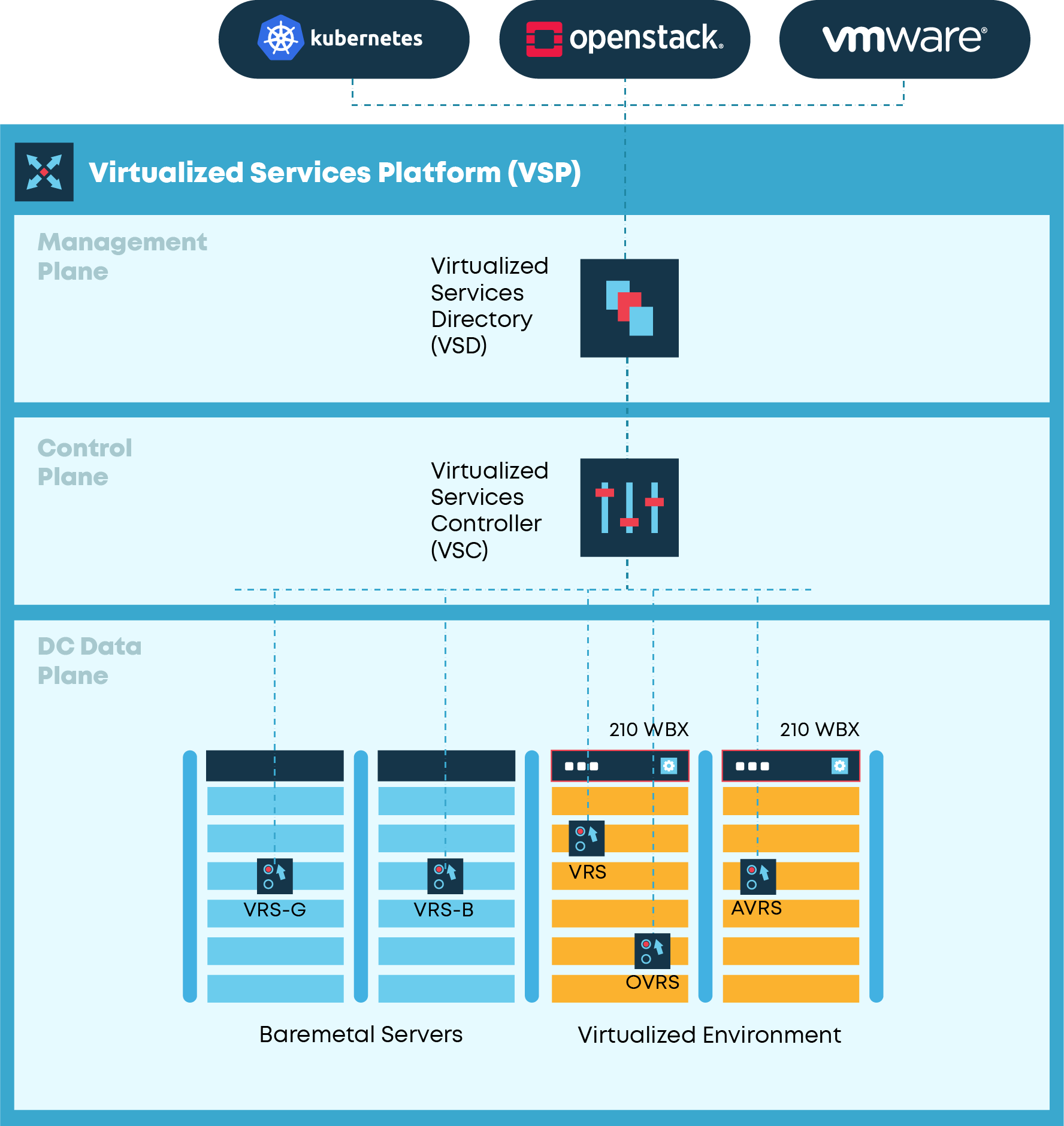提供可衡量的客戶體驗
下一代應用對效能和延遲有要求,如自動駕駛等應用將對電信雲基礎設施提出嚴格要求。

下一代應用對效能和延遲有要求,如自動駕駛等應用將對電信雲基礎設施提出嚴格要求。

數據增長巨大且突發,需適應性強有彈性的框架處理極端要求。

人們所期望降低TCO,需將下一代雲解決方案的特性納入業務案例。

行業在雲自動化的推動下加速創新,下一代電信雲服務有望繼續創新,服務敏捷和快速上市是其基本要求。
基於 FirstLink 虛擬化服務平台(VSP),VSP 是領先網絡自動化平臺,支持多種解決方案,提供高級網絡自動化,是支持VCS的平台。


The Virtualized Services Directory (VSD) is a programmable policy and analytics engine. It provides a flexible and hierarchical network policy framework that enables IT administrators to define and enforce network resource policies in an intuitive and user-friendly manner.
VSD contains a multi-tenanted service directory that supports role-based administration of users, compute and network resources.

Virtual Routing and Switching (VRS) is a software module that is installed in the hypervisor layer for VMs or as part of a container structure in virtualized server environments. It represents the virtual endpoint (i.e. VXLAN Tunnel Endpoint (VTEP)) used to create virtual connections to connect VMs and containers. VRS is based on the Open vSwitch (OVS) which is an open-source implementation of a distributed virtual multilayer switch which also provides the VTEP function.

VRS-B allows a bare metal server and its network function (e.g. WAN optimization, L7 firewall, load balancer, etc.) to participate in a given SD-WAN overlay VPN.

The AVRS leverages Data Plane Development Kit (DPDK) technology to help improve packet performance by bypassing the Linux kernel.

The Virtualized Services Controller (VSC) is the industry’s most powerful and scalable SDN controller. It functions as the robust network control plane for datacenters, maintaining a full view of per-tenant network and service topologies.

The OVRS leverages SmartNIC technology to offload SDN packet processing from the Linux kernel. VRS-G is the software gateway that allows the aggregation of bare metal applications through their VLAN IDs from their access ports.

VRS-G is the software gateway that allows the aggregation of bare metal functions through their VLAN IDs. VRS-G provides full VTEP capabilities thus allowing bare metal functions to be part of an SD-WAN overlay VPN concurrently with virtualized functions running on VMs and containers.

210 WBX is purpose-built to meet the demands of next generation data centers and cloud services, it is deployed as a scale-out underlay leaf or spine in the Clos-based data center architecture and is equipped with advanced IP routing and L2-L4 capabilities. It also serves as a powerful SDN VTEP to create Layer 2 and Layer 3 Virtual Private Network (VPN) services in the overlay. It also provides data plane aggregation of bare metal servers and appliances while providing a VTEP functionality between these legacy assets and other virtual endpoints in the network.
電信雲 SDN(或VCS)在各類部署場景中提供極高的靈活性與可擴展性以構建自動化網絡結構,具有以下特性:
為所有主要的雲管理系統、管理程式和網路設備提供支援。
提供虛擬機器、容器或裸金屬工作負載的無約束部署,從而實現服務器資源效率的最大化。
使用可定制業務邏輯和方案實現網路服務創建的完全自動化和簡化。
提供廣泛的資料分析效能監測功能。
提供對 L2 - L4 服務的支持,包括可程式設計安全服務。
將公有、私有和混合雲應用集成到受管理的 VPN 中。
優化和擴展電信雲連接,可部署在異構網絡上。